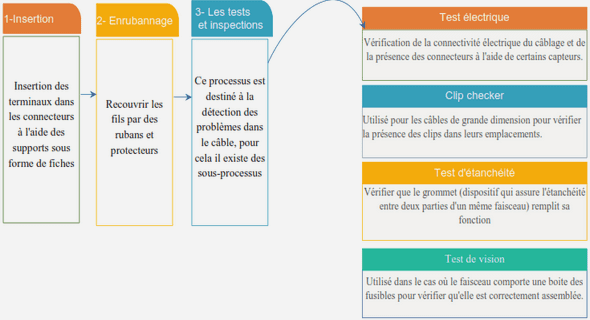ONLINE PRICE DISPERSION, AN INTERNATIONAL COMPARISON
Data Set and Definitions
Our data set consists of posted offers compiled from Amazon Marketplaces (Amazon.com, Amazon.uk and Amazon.fr) for CDs, DVDs and book markets. Amazon Marketplace is Amazon’s online marketplace that allows sellers to offer their new items alongside Amazon’s offerings. Amazon merchants and marketplace sellers are independent64 . The data are gathered daily using automated Perl scripts. We study each item (a CD, a DVD and a book) entering in the TOP 100 on the Amazon websites and analyze the posted offers for each item on the respective Amazon Marketplaces. The data were collected over 240 days between March 2006 and November 2006. We follow each item entering the TOP 100 any time in the first 22 weeks, from its first appearance until the end of the study interval, even if the item later passes out of the TOP 100. As a result of this procedure, the number of different items we follow in each category depends only on the rate of turnover in the top 100, and is not in any way representative of the market size. Each item is described by: x Characteristics of the item i (CD, DVD and Book): ID (ISBN, etc.), title, type of the product (ex. hardcover, etc.), etc. x Characteristics of a posted offer k of an item i at time t (price, sales rank, Amazon price, state of the good (new or used), etc.) on the Amazon marketplace. x Characteristics of a seller j who posted an offer k of an item i at time t (rating score, price, etc.) on the marketplace platform. The main goal of our study is to analyze price dispersion for new goods on the Amazon marketplaces; the study of used goods in the Amazon marketplace is outside the scope of this paper. There are several data issues to deal with when we analyze posted price dispersion. First, some sellers post prices above $3 million in the US DVD market. This is obviously a bug. As a general rule, we dropped items for which the price is greater than twice the median price of all items sold on the market in our dataset. We provide in Table 1 an overview of the number of offers available in the different markets. Secondly, some items that are selling way above the Amazon price on the marketplace platform are in fact unique items (signed by the author) or collectible items (such as first edition books), even for new products. We cannot construct an automated rule to identify these items.
Posted Price Dispersion – Time Dimension
To study price dispersion over time, we construct a balanced panel in order to avoid overweighting those items that enter the data collection earlier vs. later. For our balanced panel we keep all those items that were in our dataset beginning Monday of the second week of observation and follow only these items until the end of the sample (some items have entered or dropped out of the top 100 during the first week of the period; for instance, in France, 201 different books had appeared in the top 100 by the time we fixed our sample, of which 199 remained). We have 3 dimensions to any given item in our dataset. The first dimension is the product dimension: there are different books with different ISBN, CDs with different ASIN, etc. The second dimension is the time dimension since we follow each product over time. The third dimension is related to the number of sellers of a particular item on the Amazon marketplace. The meaning of price dispersion varies according to the dimension that we focus on. In the next section we consider how price dispersion across sellers varies over time. For each item category (book, CD, DVD) and market (US, UK, FR), we construct several useful statistics. For the average price in a market, we first compute the daily (time) average price for each pair (item, seller) and then average over sellers and then over items (in all cases prices are in local currency: dollars, pounds and euros respectively). We use a similar procedure for the standard deviation and average minimum of prices and for average and standard deviation of number of sellers. We compute the percentiles of prices using the week as the time unit. Table 3 summarizes the descriptive statistics for prices posted by sellers on the marketplace and the last 4 lines represent the total number of offers, sellers and items over the whole period and the (daily) average number of sellers per item. 112 We can make several interesting international comparisons. The U.S. Marketplace generally has the largest number of sellers followed by the UK and then France. We also observe that most sellers in Amazon Marketplace offer only a single item for sale. The book markets in the U.S. and the U.K. have the most sellers, whereas in France it is the DVD market; for all goods, France has many fewer sellers than in the U.S. or the U.K. The median number of days that a seller offers an item online is relatively short for all goods in the US—two to three weeks—but is more than four months for books in France. Finally, we note that while the majority of offers in the U.S. and the U.K. are from « full line » sellers that offer virtually all of the items covered in the dataset for sale, very few French sellers offer a full catalog. (An examination of the full distribution shows that with the exception of Amazon itself, a typical « large » seller in France offers no more than about half the catalog.) Looking at prices (all prices are in local currency), we note that CDs and DVDs are far more expensive in the UK, and the U.S. has the lowest prices for these goods. Book prices are comparable across the three countries. France has a law limiting discounting of books to no more than 5% off of the publisher’s list price. As a result, we find that Amazon does not offer a significant discount compared to other sellers, and the average minimum price offer tends to be closer to the average price offer for books in France than for other goods or books in other countries. We also note that the smallest coefficient of variation is in the French DVD and book markets (both .184)—with the two lowest average numbers of sellers, and the largest is in the French CD market (.280)


